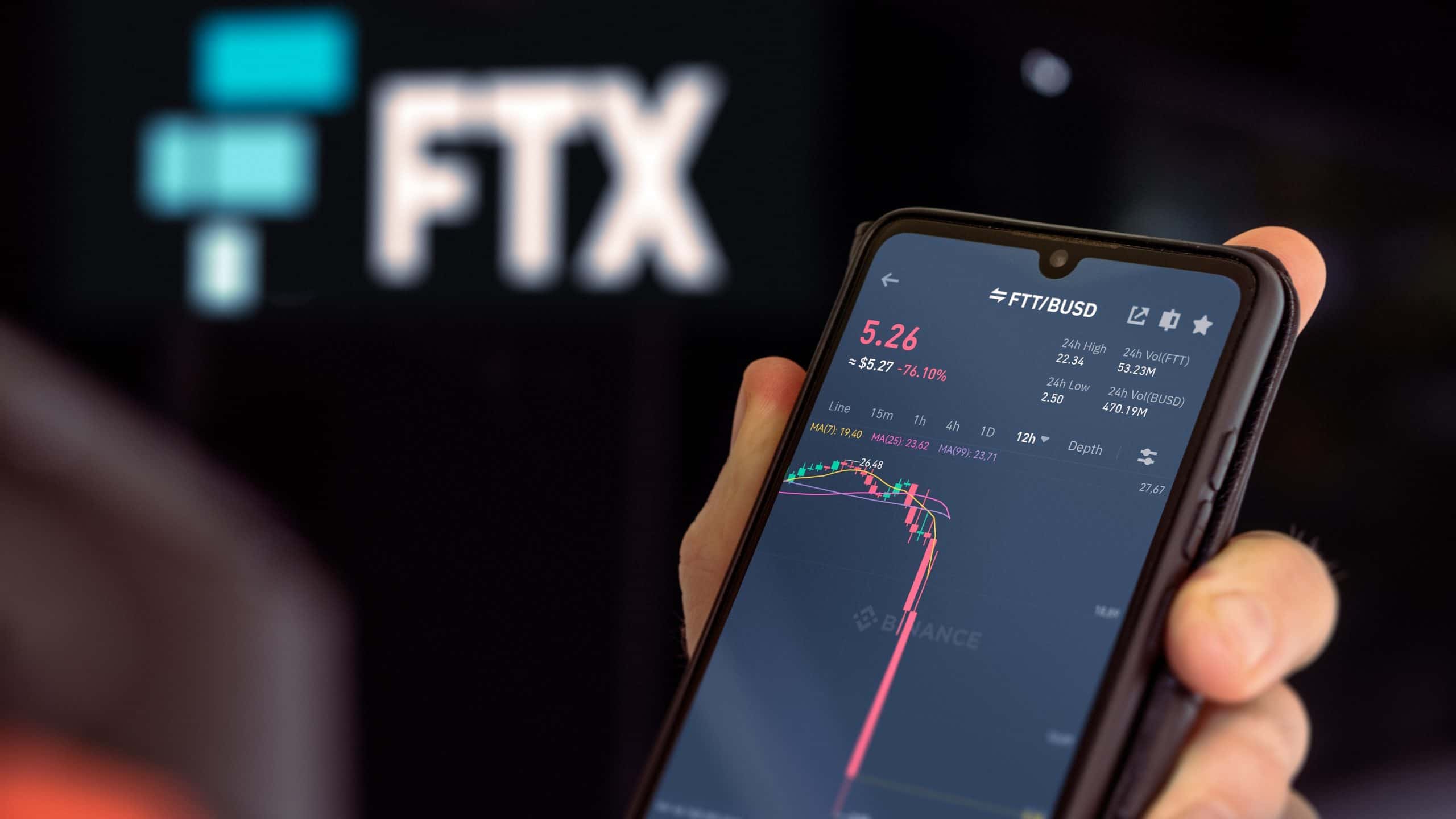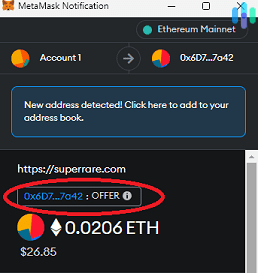The Rise and Fall of Sam Bankman-Fried and FTX
From crypto’s richest man to disgraced pariah, here’s how it all went down.
For years, Sam Bankman-Fried (known as SBF), founder of FTX crypto exchange, was praised as a virtuous crypto entrepreneur. He was known as a philanthropist who wanted to give away half of his money and as an advocate for using science to find the best ways to help others.1
But over the past week, SBF’s reputation has been almost completely destroyed. FTX has filed for bankruptcy, and billions of dollars worth of crypto withdrawals have been frozen within it. SBF himself is now under criminal investigation in the Bahamas, and FOX News has reported that authorities may extradite him to the U.S.2
Prior to the week of November 6-12, SBF was also the richest crypto investor in the world, having attained a net worth of over $20.9 billion. But in just one week, his wealth plummeted by $16 billion.
If you’ve just heard about this newest crypto scandal, you may wonder what in the world is going on. Who is Sam Bankman-Fried? And what did he do to draw the ire of so many people?
In this article, I’ll go over all of the essentials you need to know to understand the FTX crisis and the man behind it. Let’s start with a brief biography of Sam-Bankman Fried.
Who Is Sam Bankman-Fried?
Sam Bankman-Fried is the son of two Stanford University professors: Barbera Fried and Joseph Bankman. He attended MIT from 2010 to 2014. And he graduated with a major in physics and a minor in mathematics.
From 2013 to 2017, he worked for Jane Street Capital as an ETF trader.
In 2017, he quit his job at Jane Street and became the director of development for the Center for Effective Altruism (CEA). The CEA is a nonprofit that advocates using reason and science in philanthropy decisions.
That same year, SBF founded Alameda Research, a quantitative trading firm. This is where the story of SBF’s life really gets going.
The Rise of Sam Bankman-Fried and FTX
In January 2018, SBF became interested in Bitcoin and cryptocurrencies. He noticed that the price of Bitcoin on Japanese exchanges was higher than in the U.S. Through his control of Alameda Research, SBF organized an arbitrage trade and moved up to $25 million of Bitcoin each day, buying Bitcoin in the U.S. and then selling it in Japan for a profit.3
Using the money he earned from this trade and others, SBF created his own cryptocurrency exchange, FTX, in 2019. The exchange focused on attracting high-risk traders who wanted to make leveraged bets on cryptocurrency.
FTX quickly drew the interest of VC crypto investors. Binance invested a stake in the company six months after it launched,4 and in January 2022, right after the crypto boom had peaked, FTX raised $400 million in Series C funding.5 These investments put the company at a $32 billion valuation, allowing SBF’s share to catapult him into the No. 1 position for richest crypto investor.
By the time the venture capitalists had put in their final round of funding, FTX had grown to be the second-largest cryptocurrency exchange by volume. Its leveraged derivative products were extremely popular with traders, and it had become so popular that only Binance had higher volumes.
But as they say, what goes up, must come down.
Pro Tip: FTX was not licensed to operate in the U.S., and it practiced very strict “Know Your Customer” requirements that made it almost impossible for Americans to use it. But some offshore exchanges will secretly allow U.S. residents to use them. Before deciding whether to use a U.S. or non-U.S. exchange, you may want to read about the benefits and risks of using an offshore exchange and how to buy crypto safely in the U.S.
The Fall of FTX and Sam-Bankman Fried
From November 2 to 11, 2022, a series of events led to the collapse of FTX and SBF’s fortune.
November 2: Coindesk report
On November 2, a whistleblower at Alameda Research leaked its balance sheet to the crypto news site Coindesk.6 The document showed that Alameda had a significant portion of its assets invested in FTT, which is the native coin of FTX exchange. This led to speculation that Alameda may be insolvent and that the company may be covering up its bad accounting position with tokens that FTX was printing out of thin air.
November 5-6: Binance sells FTT
By the time the Coindesk report was issued, Binance had already sold its equity in FTX and had received FTT in return.
On November 5, over $580 million worth of FTT was moved from a wallet to a Binance account. The following day, Binance CEO Changpeng Zhao (known as CZ) admitted publicly that this transaction had been initiated by Binance. He announced that Binance was selling all of its FTT “due to recent revelations.” The total amount that would be sold would be $2.1 billion worth.
CZ said that the selloff would be done slowly so as to have minimal market impact.
November 7: “Bank-run” is revealed
On November 7, crypto analytics firm Nansen revealed that over $451 million worth of stablecoin had been withdrawn from FTX over the past seven days.7 This news caused panic among FTX users and led to even faster withdrawals.
Some customers were complaining that their withdrawals were taking a long time to process.
November 8: Binance offers to buy out FTX
On November 8, Sam Bankman-Fried admitted that FTX was suffering a “liquidity crunch” and that it had asked Binance to bail it out. CZ stated that Binance had entered a “letter of intent” to buy FTX but that due diligence had not been performed and he could still pull out of the deal.
November 9: The deal falls through
On November 9, CZ stated that he would not be buying FTX, thanks to “the latest news reports regarding mishandled customer funds and alleged U.S. agency investigations.” The FTX website went offline for nine hours. When it came back up, the front page contained a warning not to deposit because the exchange was having trouble processing withdrawals.
Millions of dollars of assets were owed to customers and could not be withdrawn, including $30 million owed to Coinshares, $18.1 million owed to crypto exchange Hbit, a “significant amount” owed to Galois Capital, and unknown amounts to various users who had failed to withdraw before the withdrawals stopped.
November 10-11: SBF apologizes and FTX files for bankruptcy
On November 10, SBF posted an apology tweet thread.8 On November 11, he resigned from FTX, and the exchange filed for bankruptcy.
Contagion spreads
The FTX collapse caused a contagion to spread through the crypto market, hitting major firms like Sequoia Capital, Genesis Global Capital, Blockfi, and Gemini. It also caused the crypto market as a whole to crash, pushing Bitcoin below $16,000 for the first time since [2020.
Sam-Bankman Fried’s net worth collapse
Because so much of Sam Bankman-Fried’s assets were tied up in FTX equity, Fortune magazine estimated that he lost $16 billion in net [citaiton id=”9″]worth.[/citation]
What Happened and How Can It Be Prevented in the Future?
Since the crisis started, there has been rampant speculation on social media as to what could have caused the collapse of the exchange. The most common explanation is that FTX must have loaned customer funds to Alameda, who used it to invest in risky and illiquid assets. CNBC claims to have an anonymous informant who has confirmed this theory.10 SBF may have simply assumed that withdrawals would remain small and therefore no one would notice that the exchange didn’t have enough cryptocurrency to back customers’ deposits.
However, no one has yet been able to prove this theory one way or another, and we won’t know what really happened until the bankruptcy proceedings are finished. It’s important to emphasize also that SBF has not been charged with any criminal offense at this point.
What is the solution?
In response to the crisis, a number of solutions have been offered to prevent an FTX-like event from happening again. Here are the three most prominent:
- Proof of reserves: Some exchange executives have argued that exchanges should produce a proof of reserves page that allows users to audit reserves in real time, and that users should not patronize exchanges that refuse to do this. Binance, OKX, and Kucoin have pledged that they will have proof of reserves pages within a month.
- Better regulation: Some experts have argued that the FTX collapse is caused by lawmakers’ neglect. According to this view, parliaments and congresses throughout the world have left crypto regulations vague, creating loopholes for people like SBF to get away with actions that wouldn’t be possible in the stock market or in banking. The solution is to come up with clear and fair regulations that will punish bad actors without harming honest participants.
- DeFi: Many developers of decentralized finance (DeFi) apps have argued that the FTX collapse happened because FTX is centralized. The solution, in this view, is for people to stop using centralized exchanges, except as gateways into the crypto world. In other words, users should not keep their crypto in an exchange.
FYI: Decentralized finance (DeFi) is a movement to put traditional financial apps on the blockchain, making them more transparent and safe.
Wrapping Up
So that’s what happened to FTX and Sam Bankman-Fried. The story of SBF serves as a cautionary tale of what can go wrong when entrepreneurs try to cut corners and take too many risks in their business practices.
This story also serves to illustrate the importance of good crypto security.
-
Coin Telegraph. (2021, Feb 24). Sam Bankman-Fried: The crypto whale who wants to give billions away.
cointelegraph.com/magazine/sam-bankman-fried-the-crypto-whale-who-wants-to-give-billions-away/ -
Fox Business. (2022, Nov 16). US may extradite Sam Bankman-Fried amid FTX collapse investigation.
foxbusiness.com/politics/us-may-extradite-sam-bankman-fried-ftx-collapse-investigation-report -
New York Mag. (2022 Nov 16). The Mysterious Cryptocurrency Magnate Who Became One of Biden’s Biggest Donors.
nymag.com/intelligencer/2021/02/sam-bankman-fried-biden-donor.html -
Binance. (2019, Dec 20). Binance Announces Strategic Investment in Cryptocurrency Derivatives Exchange FTX.
binance.com/en/blog/all/binance-announces-strategic-investment-in-cryptocurrency-derivatives-exchange-ftx-414610870200725504 -
CNBC. (2022, Jan 31). Cryptocurrency exchange FTX hits $32 billion valuation despite bear market fears.
cnbc.com/2022/01/31/crypto-exchange-ftx-valued-at-32-billion-amid-bitcoin-price-plunge.html -
CoinDesk. (2022, Nov 2). Divisions in Sam Bankman-Fried’s Crypto Empire Blur on His Trading Titan Alameda’s Balance Sheet.
coindesk.com/business/2022/11/02/divisions-in-sam-bankman-frieds-crypto-empire-blur-on-his-trading-titan-alamedas-balance-sheet/ -
Twitter. (2022, Nov 7). Jason Choi Tweet.
twitter.com/mrjasonchoi/status/1589541601801801729 -
Twitter. (2022, Nov 7). SBF Tweet.
twitter.com/mrjasonchoi/status/1589541601801801729 -
Fortune. (2022, Nov 15). How is SBF coping with losing $16 billion and the possibility of prison? He’s playing video games and posting cryptic tweets.
fortune.com/2022/11/15/sam-bankman-fried-losing-16-billion-potential-prison-time-playing-video-games-posting-cryptic-tweets/ -
CNBC. (2022, Nov 13). Sam Bankman-Fried’s Alameda quietly used FTX customer funds for trading, say sources.
cnbc.com/2022/11/13/sam-bankman-frieds-alameda-quietly-used-ftx-customer-funds-without-raising-alarm-bells-say-sources.html




